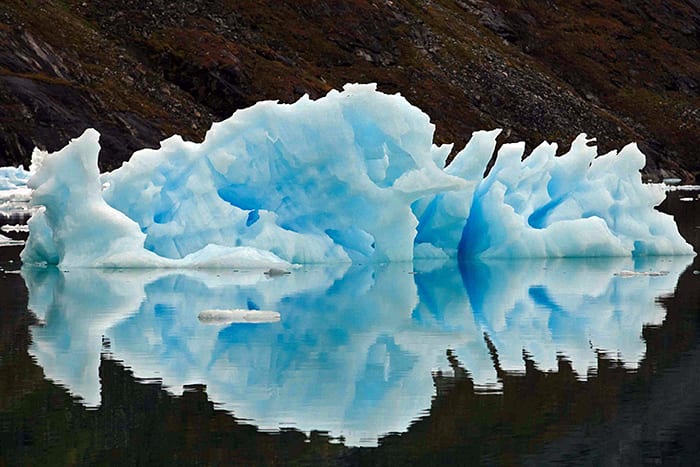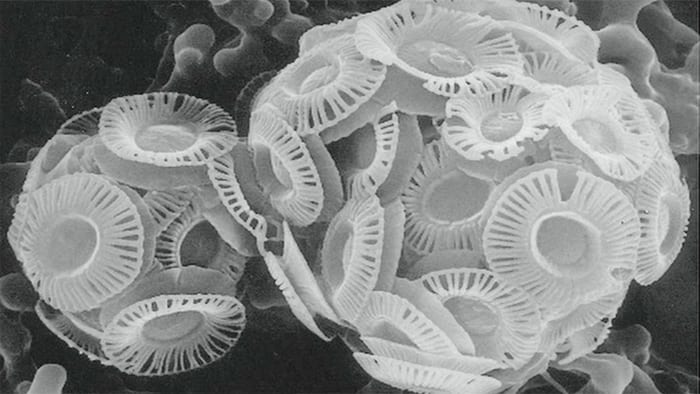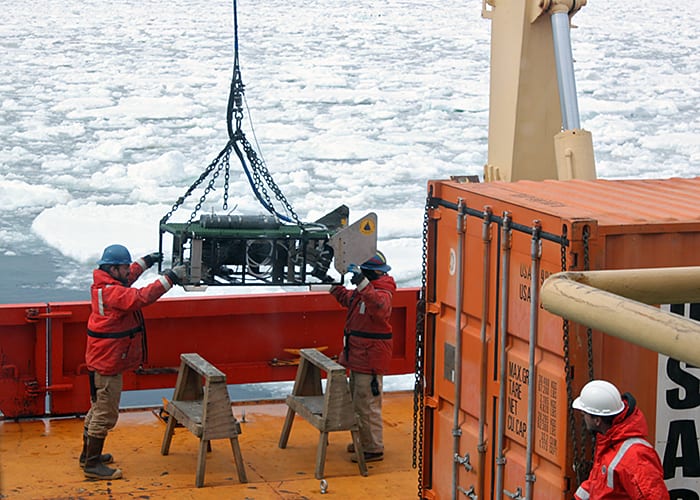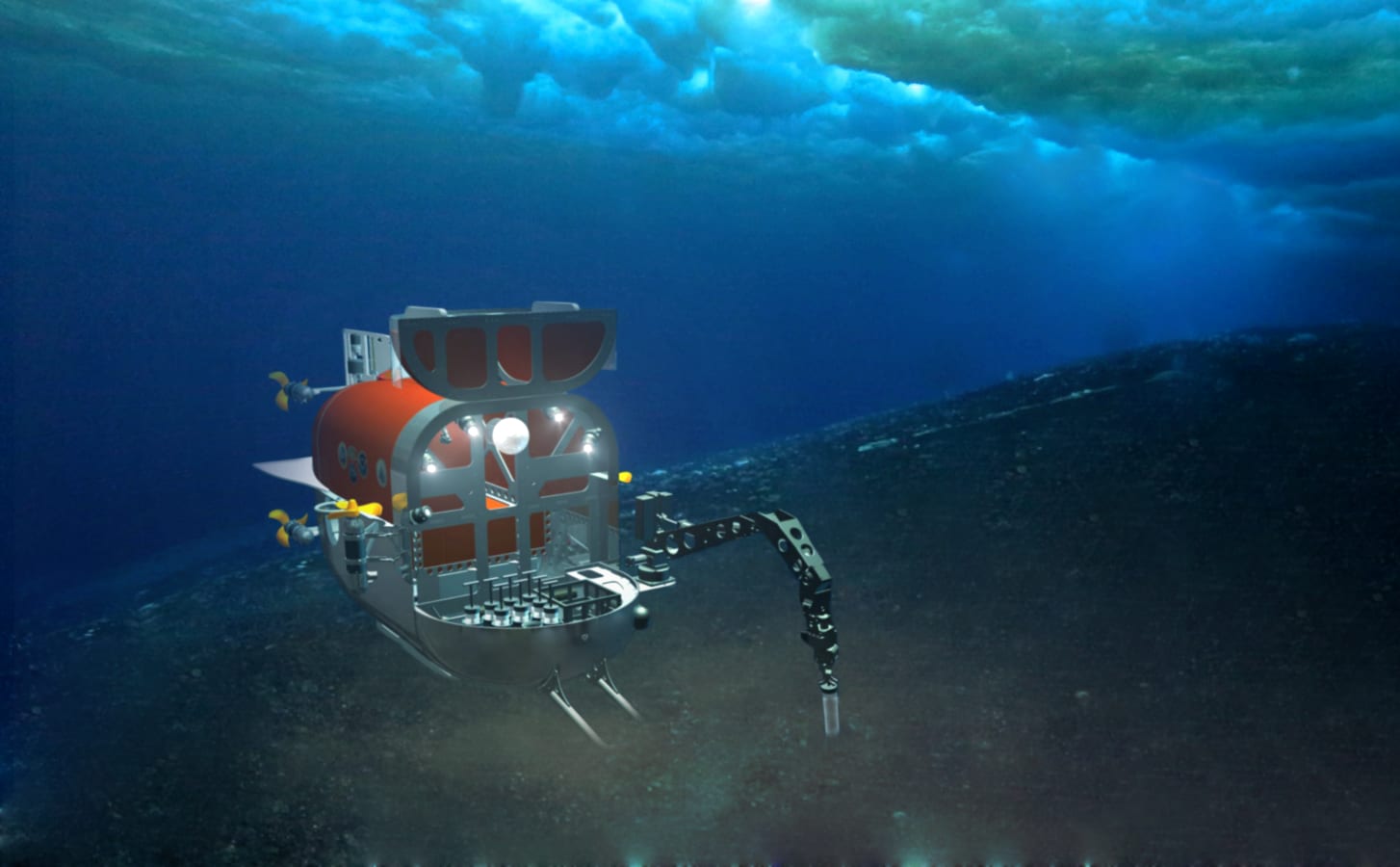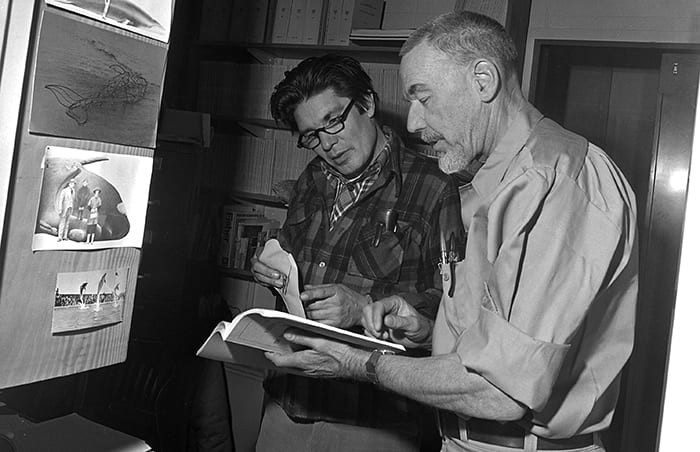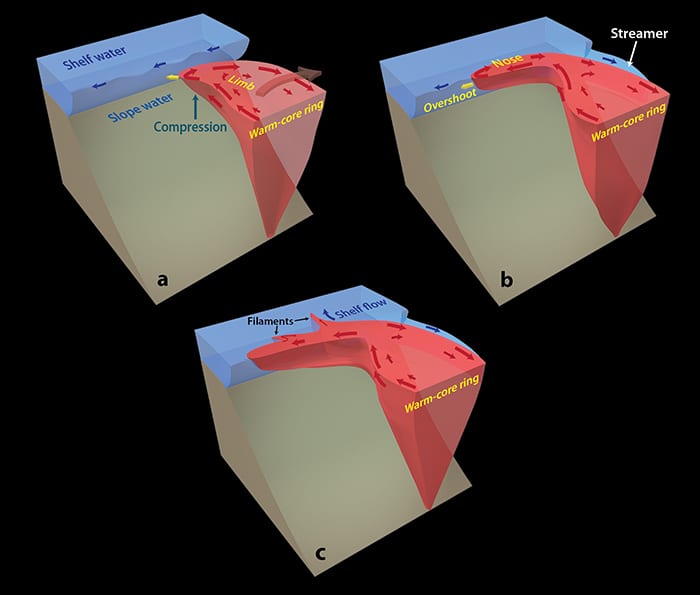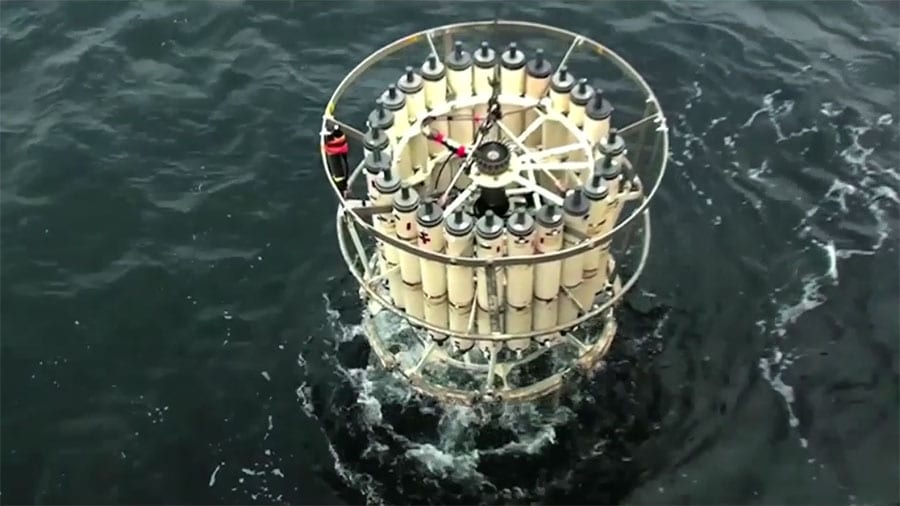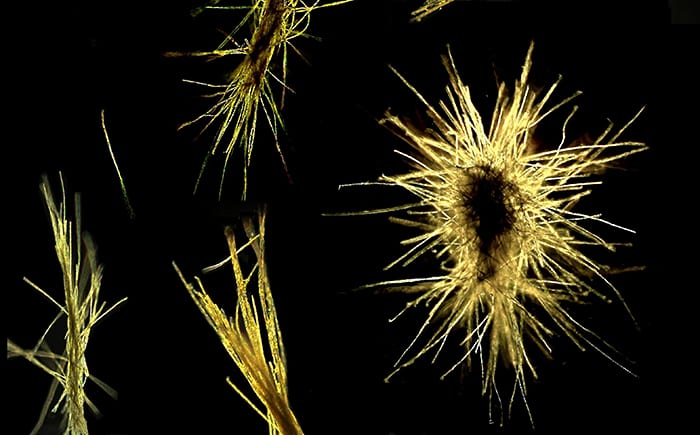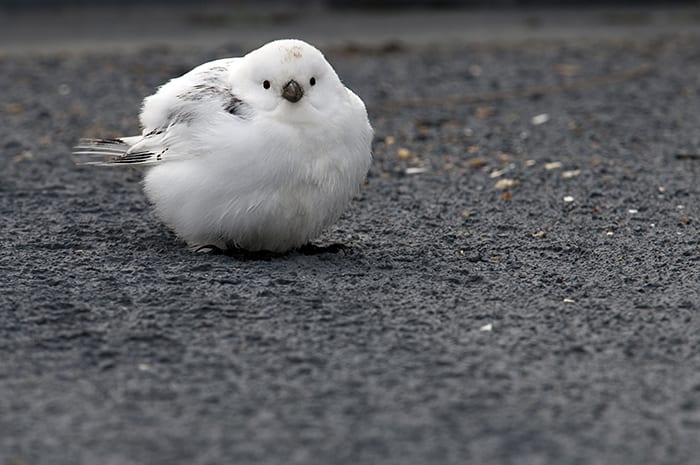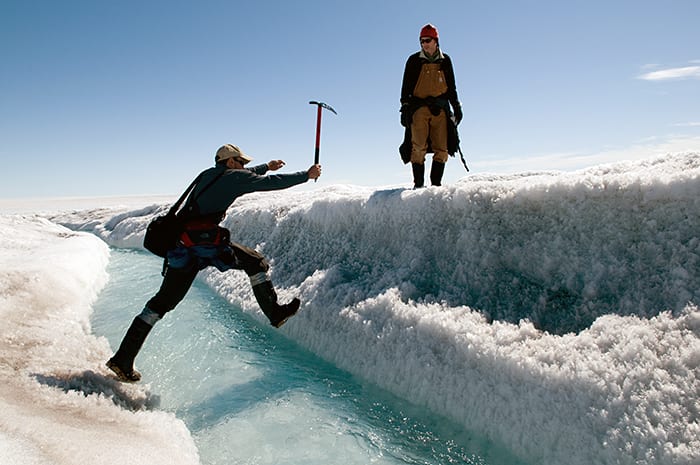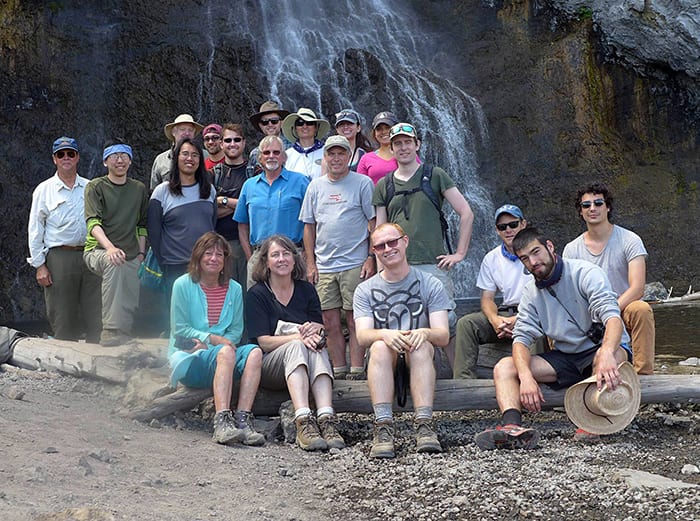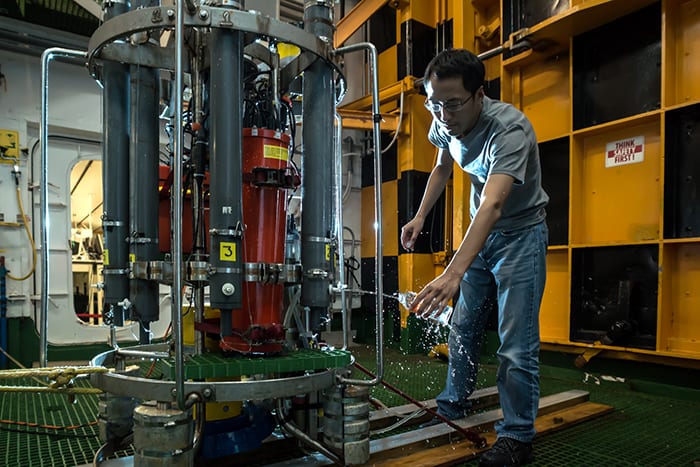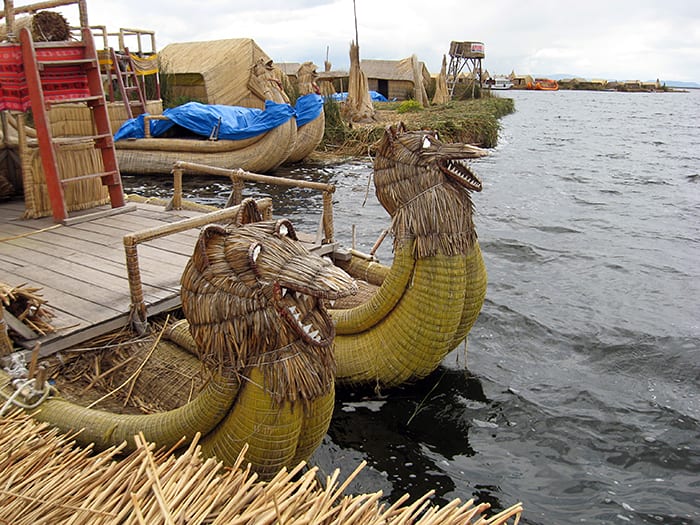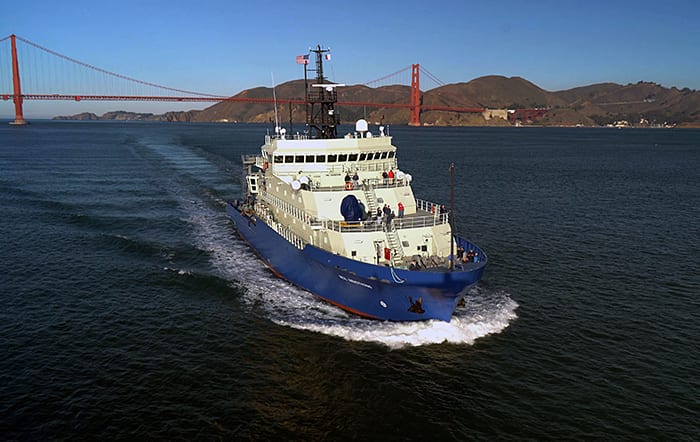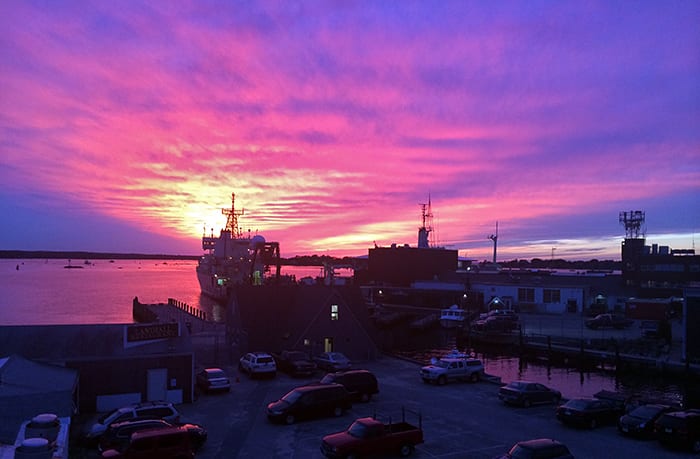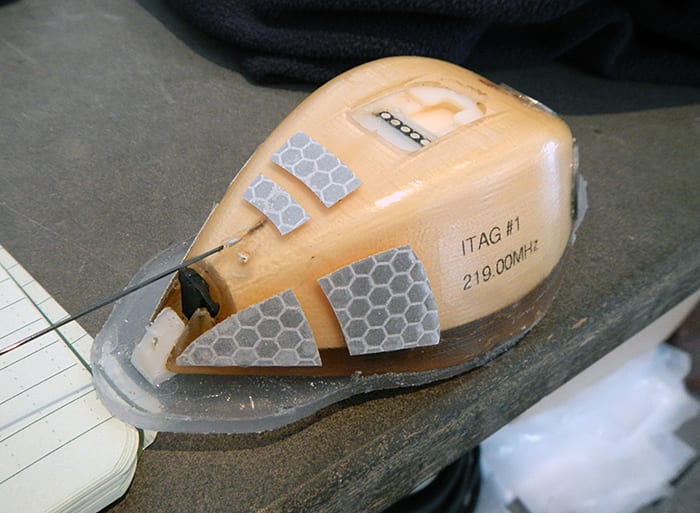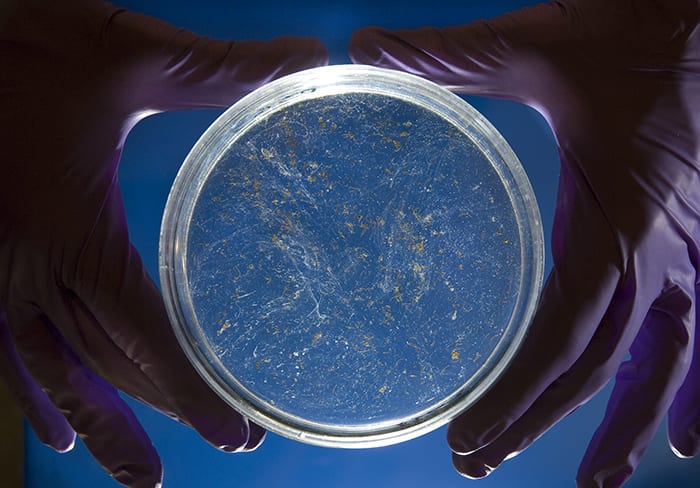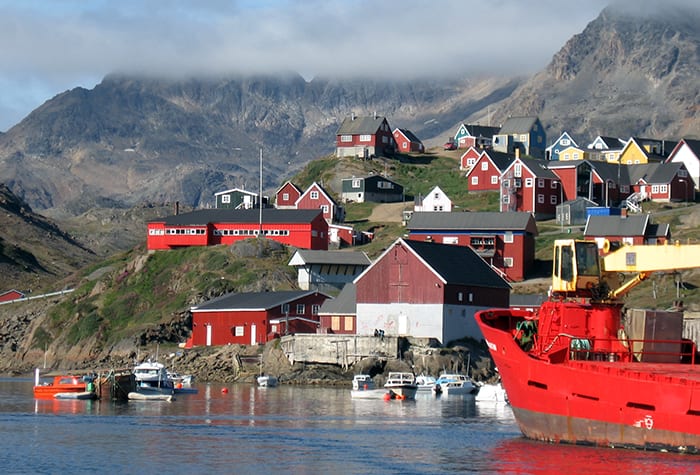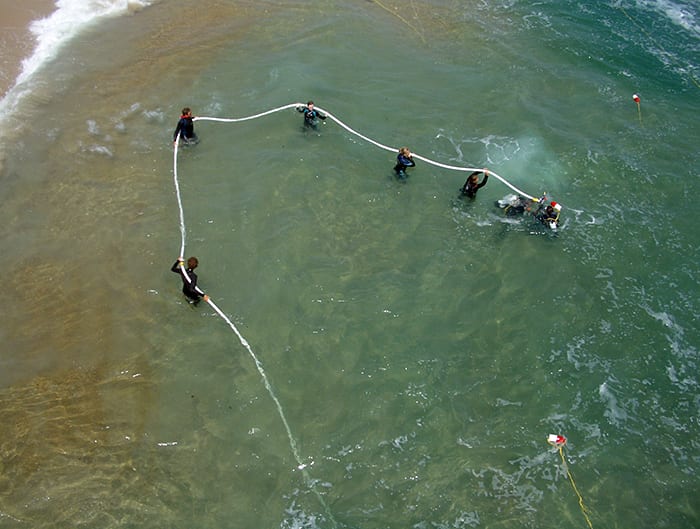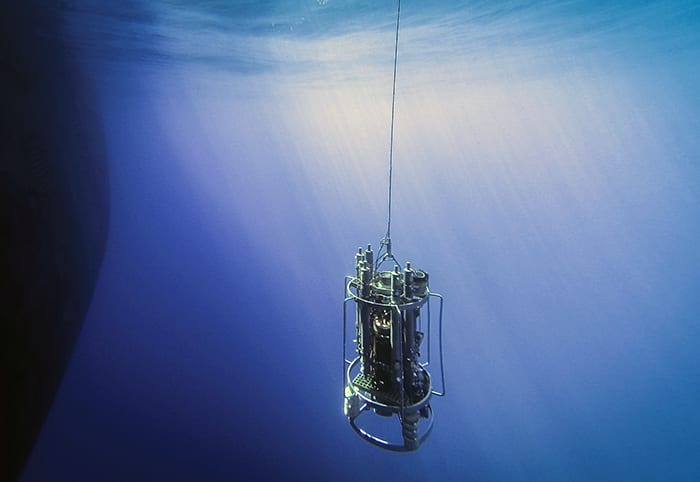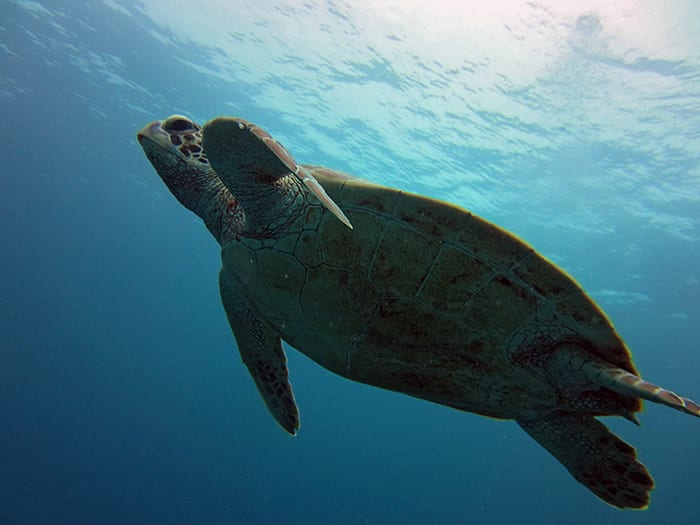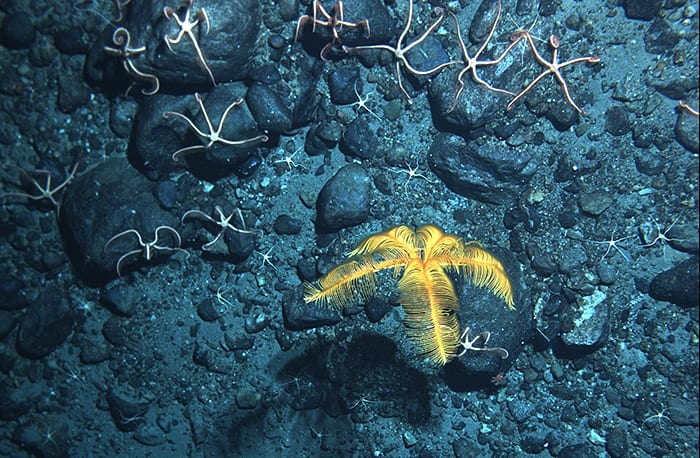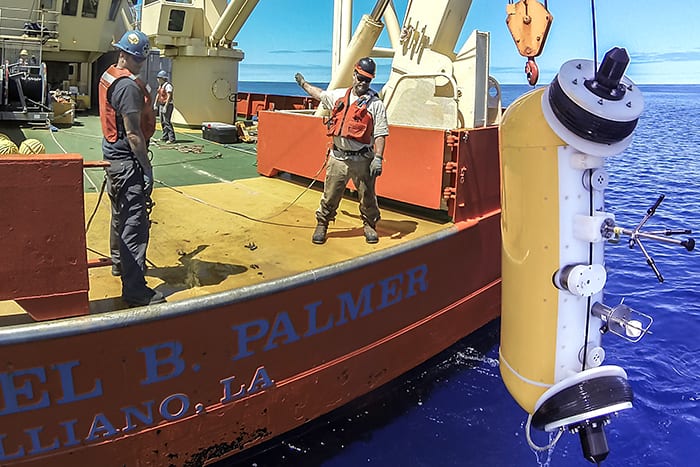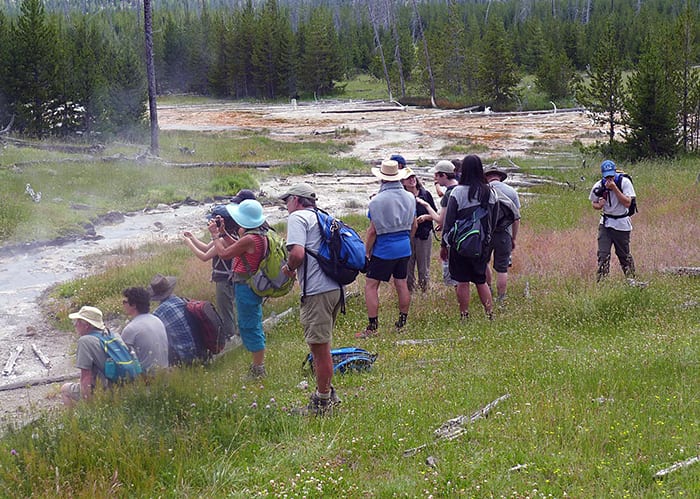Multimedia
Old As Ice
This image of a blue iceberg, calved off a glacier, was captured on a recent research trip to waters off Greenland. Its striking color indicates that the ice in it…
Read MoreFrom Mud to Molecules
From mud to molecules—discover how deep-sea sediments reveal Earth’s climate history and help scientists predict future climate change.
Read MoreTracking an Advance
King crabs may be an important economic marine resource in many regions, but they are also a high-level predator that, in the wrong place, can have devastating impacts on the…
Read MoreNUI manipulator integration
Bioacoustic Pioneers
In 1949, WHOI biologist William Schevill, right, and his wife Barbara Lawrence used a crude hydrophone and a dictating machine to record beluga whales from a small boat in the…
Read MoreNosing Onto the Shelf
Gliders released off the coast of Massachusetts have helped scientists understand a previously unknown process by which warm Gulf Stream water and colder waters exchange in the economically important waters…
Read MoreFukushima’s Impact on the Ocean
Chemical oceanographer Ken Buesseler discusses the impacts of the Fukushima nuclear disaster on the ocean.
Read MoreTricking Tricho
New research by scientists at WHOI and the University of California, has demonstrated that Trichodesmium (shown here), a key organism in the ocean’s food web, will start reproducing at high speed…
Read MoreRare Sight
McKay’s Bunting is a special sight. Named in honor of American naturalist Charles McKay , these birds summer and breed on a few remote islands in the Bering Sea, and…
Read MoreTesting the Ice
An ice axe is an indispensable tool for navigating on ice. Scientists often use them to probe the snow ahead to see how deep it is, to stop themselves when sliding down…
Read MoreFairy Falls
WHOI students and scientists paused for a group photo before Fairy Falls during a field trip to Yellowstone National Park in Wyoming. The trip culminated the 2015 Geodynamics Program, a…
Read MoreDo More on DoMORE
Jian Zhao from the Lamont-Doherty Earth Observatory (LDEO) takes water samples from a CTD (conductivity, temperature, depth) rosette on board the research vessel Nathaniel B. Palmer during a 2015 expedition off…
Read MoreLake Home
Peru’s Lake Titicaca has been home to ancient civilizations for mellennia, including the Incan Empire and, most recently, the Uros, who live on a network of manmade, floating islands and…
Read MoreWelcoming Armstrong
It isn’t often that WHOI or any other research institution welcomes a new research vessel to the fleet. On October 31, R/V Neil Armstrong set out from Anacortes, Wash., where it…
Read MoreBlazing Sunsets
Sunsets come earlier with every passing day this time of year, but the trade-off is that they are often quite beautiful. A recent, blazing sunset framed WHOI’s research vessel Atlantis…
Read MoreNovel Instrument
Invertebrates, such as squid and jellyfish, play a crucial role in the marine food web and are also vital commercial fisheries. Despite their importance, little is known about their natural…
Read MoreCarbon Lock
A jar holds a sample of particles collected at 150 meters depth during a cruise along the West Antarctic Peninsula. These particles—mostly krill fecal pellets and collections of diatoms—are an important component…
Read MoreIn the Path of Piteraqs
The residents of Tasiilaq, the most populous community on Greenland’s eastern coast, are often exposed to the hazards of strong winds known as piteraqs. These torrents of cold air suddenly sweep…
Read MoreGetting Ripped
MIT-WHOI Joint Program student Melissa Moulton and colleagues in the PV Lab at WHOI undertook an study recently to investigate where and how rip currents form on beaches. They used…
Read MoreWhat Goes Down
A scientific instrument called a CTD (conductivity, temperature, depth) is pulled up to the research vessel Nathaniel B. Palmer from deep in the Atlantic Ocean. The 2015 expedition led by…
Read MoreTurtle Sighting
Hanny Rivera, a graduate student in the MIT-WHOI Joint Program, took this photo of a sea turtle on the Great Barrier Reef off Australia. Many sea turtle species are endangered,…
Read MoreGolden Feather
This image of a golden feather star (unstalked crinoid) was taken with an underwater camera system known as Seasled. The Seasled was developed by WHOI scientist Dr. Hanu Singh’s lab…
Read MoreClosing the Loop
The world ocean circulates like a conveyor belt, with cold, salty, dense water in the North Atlantic sinking beneath the surface. But one question remains a mystery: How do these…
Read MoreIn Search of Geysers
WHOI students and scientists investigate Spray Geyser during a field trip to Yellowstone National Park in Wyoming. The trip culminated the 2015 Geodynamics Program, a semester-long series of seminars by…
Read More
